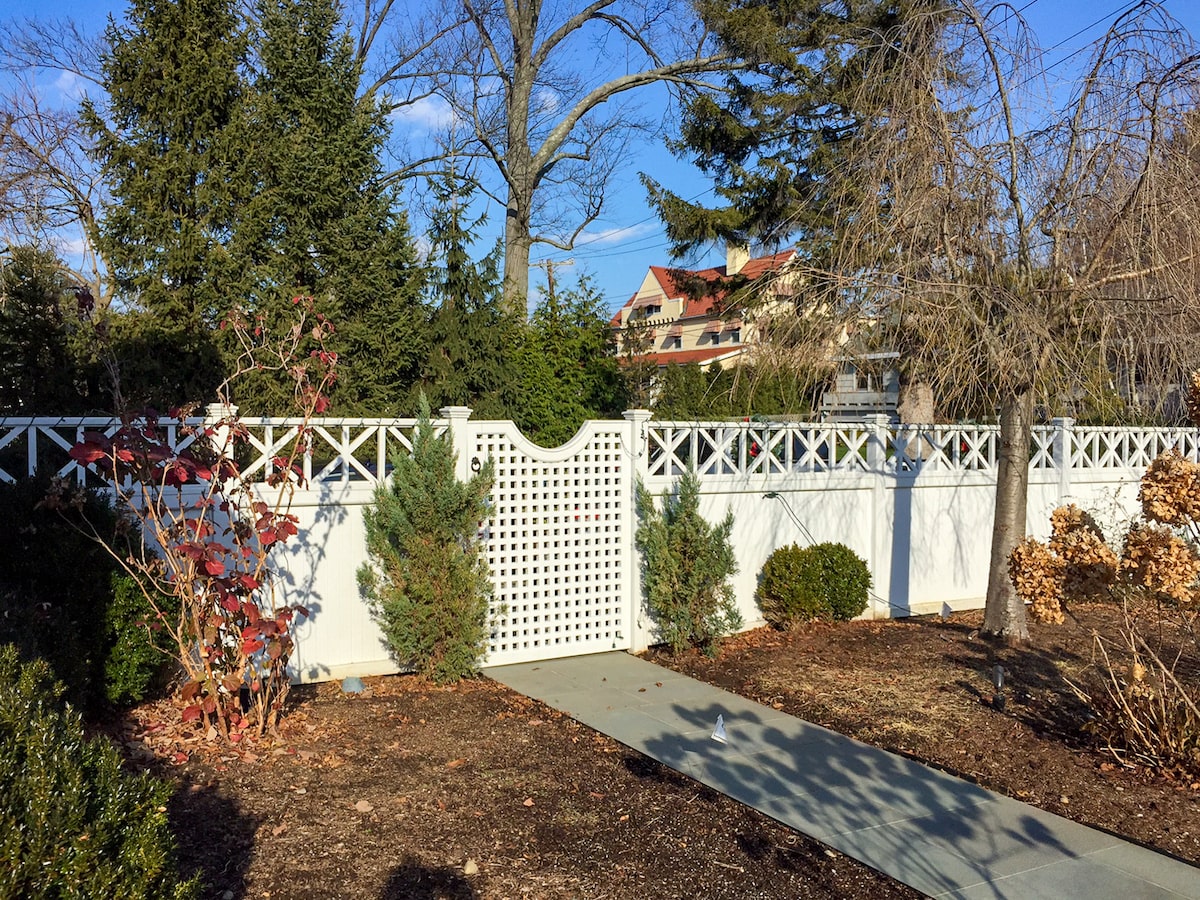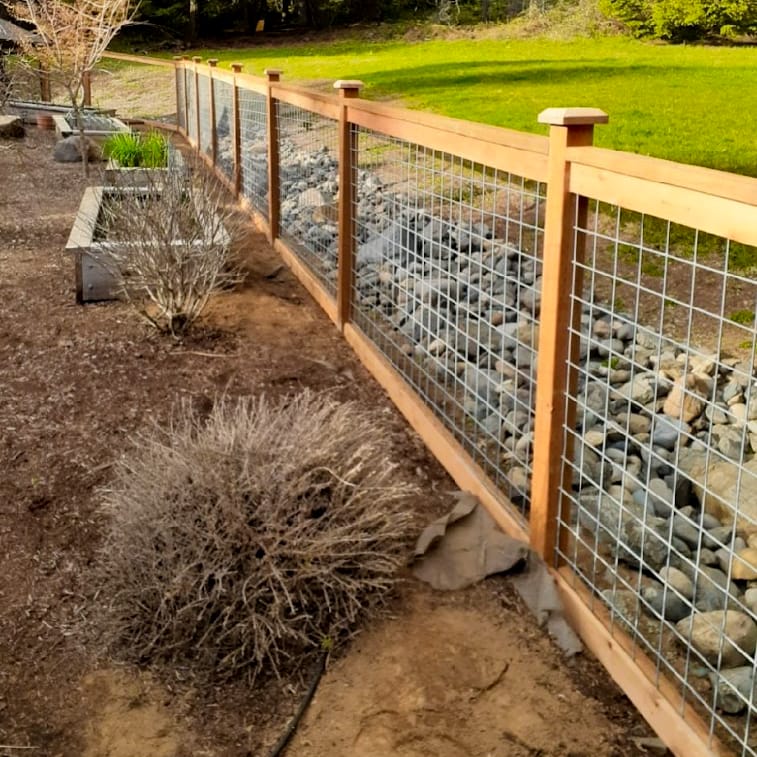All Categories
Featured

As sustainability comes to be a concern for services and property owners alike, the need for environmentally friendly products, consisting of secure fencing materials, has increased. Standard fence alternatives such as metal, timber, and vinyl can have unfavorable ecological effects, yet there are now several eco-conscious alternatives to think about. Selecting environmentally friendly fence materials not only aids decrease your carbon footprint but also adds to an extra lasting and all-natural setting.
- Bamboo Fencing. Bamboo is among one of the most green fencing options readily available. Understood for its rapid growth and minimal ecological effect, bamboo is a highly renewable resource. Unlike traditional hardwoods, bamboo can be gathered in a couple of years and grows back swiftly, making it a sustainable choice for secure fencing. It's solid, resilient, and immune to insects, offering a trendy and natural option for home owners.
Perks: Bamboo is fast-growing, light-weight, and sustainable. It requires fewer pesticides and plant foods contrasted to other plants, making it a low-maintenance option. Considerations: While bamboo is sturdy, it might need periodic upkeep to protect it from weathering and all-natural wear. It can also be susceptible to splitting in chillier environments. 2. Recycled Materials. Fences made from recycled materials are ending up being increasingly preferred as a green choice. These fences are made from post-consumer plastic, redeemed wood, and various other recycled products, maintaining waste out of land fills. Utilizing recycled materials reduces the need for new raw sources, lessening environmental degradation.

Advantages: These fences help in reducing waste and conserve natural resources. They are also commonly low-maintenance and resilient. Factors to consider: While recycled fencings can be sturdy, the appearances might not constantly match traditional secure fencing options. Numerous designs are now available that imitate the look of timber or rock. 3. Compound Fencing. Composite secure fencing is made from a mix of recycled timber fibers and plastic, offering the look of wood without the ecological influence. Numerous composite fencings are made from recycled content, further improving their environmentally friendly condition. These fencings are lasting, need very little maintenance, and do not require to be treated with damaging chemicals like standard wood fencings.
Conveniences: Composite fencings are durable, immune to rot, and call for little maintenance. They also provide a comparable aesthetic to wood without deforestation concerns. Considerations: While they are low-maintenance, composite fencings might be extra costly than traditional timber or vinyl alternatives. The production procedure can likewise be energy-intensive. 4. Cedar and Redwood Secure Fencing. Cedar and redwood are all-natural timber materials that are commonly taken into consideration much more environment-friendly compared to other woods. These sorts of wood are naturally resistant to degeneration, insects, and wetness, which minimizes the demand for chemical therapies. Additionally, these trees are expanded in lasting woodlands, making certain that they are gathered sensibly.
Benefits: Cedar and redwood are both sturdy and normally lovely materials. They provide all-natural resistance to parasites and rot, which helps in reducing the need for chemical therapies. Factors to consider: These timbers can be much more pricey than various other choices. They also need periodic upkeep, such as discoloring or securing, to make certain long life. 5. Living Fencings (Hedges and Shrubs) Living fencings, made from bushes, hedges, or trees, are an eco-friendly alternative that also supplies all-natural privacy and aesthetic charm. Plants such as privet, boxwood, bamboo, and arborvitae are generally made use of for developing thick, green fences. These living barriers assist with sound decrease, improve air quality, and supply environment for local wild animals.
Conveniences: Living fences advertise biodiversity, boost air high quality, and boost the aesthetic appeal of your building. They likewise soak up carbon dioxide and contribute to a greener environment. Factors to consider: Living fences require maintenance, such as pruning and watering, to ensure they grow appropriately. They may not provide the exact same degree of protection as typical secure fencing materials. 6. Stone and Reclaimed Block Secure Fencing. Rock and recovered brick fencings are another environment-friendly choice. These materials are durable, need minimal maintenance, and have a lengthy lifespan. When redeemed from old buildings or frameworks, they help in reducing the demand for brand-new materials and stop waste from going into garbage dumps.
Conveniences: Rock and brick are resilient, weather-resistant, and supply a timeless, traditional aesthetic. Recovered products additionally have a marginal ecological impact. Considerations: The installation of rock and brick fences can be labor-intensive, and the materials may be a lot more expensive than various other alternatives. However, the lasting resilience and low upkeep costs can make them a rewarding financial investment. Verdict. Choosing an environment-friendly secure fencing material is a wise way to minimize your environmental impact while enhancing your building's privacy and aesthetic appeal. Bamboo, recycled materials, composite secure fencing, and living fencings all use sustainable choices that minimize waste, conserve resources, and advertise a greener way of living.
By selecting one of these green fencing choices, you add to the defense of the atmosphere while creating a stunning, functional outside room. The appropriate material will certainly rely on your preferences, climate, and the level of upkeep you agree to offer, but felt confident that there are countless eco-conscious choices that align with your sustainable lifestyle.
Latest Posts
Find Affordable Auto Repairs with Montclare’s Limited-Time Service Specials
Published May 29, 25
1 min read
Learn About Auto Services & More: Complete Services Guide from Montclare Auto Repair
Published May 26, 25
1 min read
Discover Special Auto Repair Deals in Chicago at Montclare Auto Repair
Published May 25, 25
1 min read
More
Latest Posts
Find Affordable Auto Repairs with Montclare’s Limited-Time Service Specials
Published May 29, 25
1 min read
Learn About Auto Services & More: Complete Services Guide from Montclare Auto Repair
Published May 26, 25
1 min read
Discover Special Auto Repair Deals in Chicago at Montclare Auto Repair
Published May 25, 25
1 min read